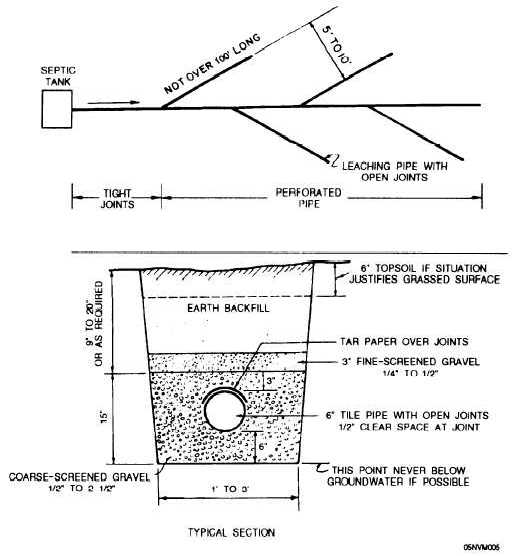placed in the absorption trench. Figure 10-6 shows a typical layout of a leaching field.
The type of soil at the location of the field will dictate the width of the trench. Sand and sandy loam require a width of 1 foot, loam and sand and clay mixture 2 feet, clay with some gravel 3 feet. Note these are minimum trench widths based on the type of soil encountered at the jobsite.
Placing the leaching pipe below the frost line to prevent freezing is not necessary. Under no circumstances can you lay leach pipe below the ground water level. When digging the absorption trenches, you must consider the lengths of each lateral and their spacing in relation to each other.
Do not make any lateral longer than 100 feet in length. Table 10-17 shows the size and spacing requirements for disposal fields.
After the trenches are laid out and dug, filler material must be placed along with the actual pipe. The filler material may be washed gravel, crushed stone, slag, or clean bank-run gravel ranging in size from 1/2 to 2 1/2 inches. Filler material in the trench should not be less than 6 inches deep below the bottom of the pipe. It should be at least 2 inches above the pipe. To prevent backfill soil from filling the voids in the filler material, it is recommended that a 3-inch

Figure 10-6. - Typical layout of a subsurface tile system.
Continue Reading